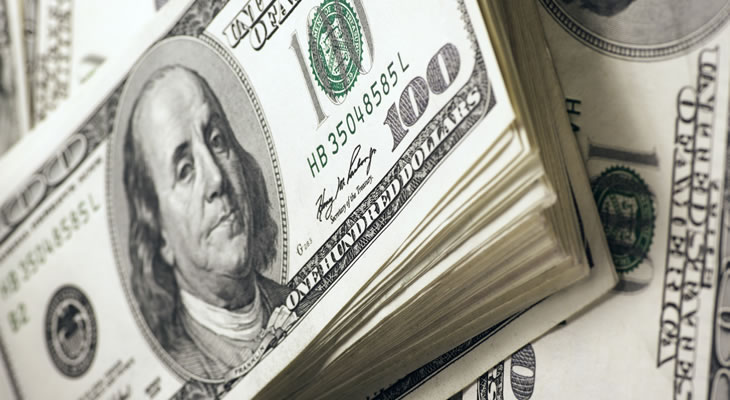- Boris Johnson unexpectedly withdrew from Tory leadership race – GBP USD exchange rate bounced in response
- BoE likely to cut interest rates in July – Comments from Governor Carney prompted fresh Pound slump
- US Dollar boosted by safe-haven demand – Chances of 2016 Fed rate hike diminished further
- ISM Manufacturing predicted to strengthen – ‘Greenback’ to extend gains on robust domestic data
The prospect of imminent policy easing from the Bank of England (BoE) prompted the GBP USD exchange rate to weaken sharply, with the fallout from the Brexit vote continuing to dominate market sentiment.
Pound (GBP) Volatility Continued on Johnson Withdrawal and BoE Commentary
In spite of persistent market uncertainty the Pound to US Dollar (GBP USD) exchange rate made an attempt at a modest recovery during the week, strengthening ahead of fresh commentary from Bank of England (BoE) Governor Mark Carney. While UK consumer confidence slumped in the wake of the Brexit vote and the latest current account report pointed towards a still wide deficit this failed to particularly weigh on Sterling (GBP) on Thursday. Investors remained primarily concerned with current political and monetary policy developments, given that domestic ecostats will not reflect the impact of the EU referendum result for some time yet.
The shock announcement that Boris Johnson, figurehead of the ‘Leave’ campaign and former frontrunner, would not be running for leadership of the Conservative party temporarily buoyed the Pound. Markets had been somewhat concerned by the prospect of a Prime Minister Johnson, with his stepping down raising hopes that David Cameron’s successor could secure the best possible outcome in the upcoming exit negotiations. Researchers at Westpac echoed this tone, noting:
‘We favour the endgame of the Brexit referendum being elections. In this scenario, Brexit does not happen this year. It may never happen. However, for us to be correct on this, we would need to see a strong pro remain leadership develop in the Labour leadership battle while a strong pro Brexit conservative leader would clearly see us revising our endgame probabilities.’
Comments from Bank of England (BoE) Governor Mark Carney brought the Pound’s rally to an end, however, as the policymaker indicated the bank’s adoption of an explicit easing bias. While Carney did stress a belief that the domestic economy can recover from any negative impacts of a Brexit investors were not overly enthused by the prospect of lower interest rates. With strong speculation that the BoE could cut rates at its next policy meeting in July the GBP USD exchange rate naturally slumped in response.
Speculation over Fed Monetary Policy Direction Failed to Weigh on USD Exchange Rate
With safe-haven demand also on the rise the US Dollar (USD) benefitted further on Thursday from an unexpectedly strong Chicago Purchasing Manager Index. Forecasts had pointed towards a moderate improvement from 49.3 to 51.0, prompting a surge in support for the ‘Greenback’ when the figure instead clocked in at 56.8. This overshadowed a slightly more mixed Jobless Claims report, pointing towards greater strength within the world’s largest economy.
Even though this eased concerns over a potentially severe slowdown within the US economy, however, the chances of the Fed opting to raise interest rates before the end of the year are seen to have remained slim. In fact, researchers at RBS note;
‘While we think the hurdle for a rate cut — or more Fed accommodation of any kind — at this time is quite high, we are no longer confident that the next Fed move will be to hike. The timing and direction of the next move will depend on how destabilizing the Brexit vote ultimately is to financial markets and the global economy.’
In spite of the rampant strength of the US Dollar the economic outlook does not seem overly encouraging at this juncture, particularly with a contentious presidential race set to trigger further volatility in the later months of the year. Nevertheless, the Fed’s lack of imminent action is unlikely to deter investors from continuing to pile into the ‘Greenback’ due to the persistent uncertainty weighing on markets.
GBP USD Exchange Rate Forecast: Stronger Manufacturing Data Predicted to Boost US Dollar
The appeal of the US Dollar could pick up further in response to this afternoon’s ISM Manufacturing Index, assuming that the sector continues to demonstrate signs of strengthening over the last month. While stronger domestic data is unlikely to encourage the Fed to return to its monetary tightening program for the foreseeable future it could reduce talk of a rate cut. If the US economy is seen to have remained robust in spite of market volatility and mounting negative global headwinds then the ‘Greenback’ is expected to remain on bullish form.
Demand for the Pound, on the other hand, is likely to stay weak over the coming days, unless a greater sense of stability emerges from the political scene. Brexit-based uncertainty is predicted to hamper the appeal of Sterling until there is more of a sense of certainty amongst the fallout, with the impact of domestic data likely to remain limited at best.
Current GBP, USD Exchange Rates
At the time of writing, the Pound to US Dollar (GBP USD) exchange rate was slumped around 1.3305, while the US Dollar to Pound (USD GBP) pairing was making gains around 0.7516.


Comments are closed.